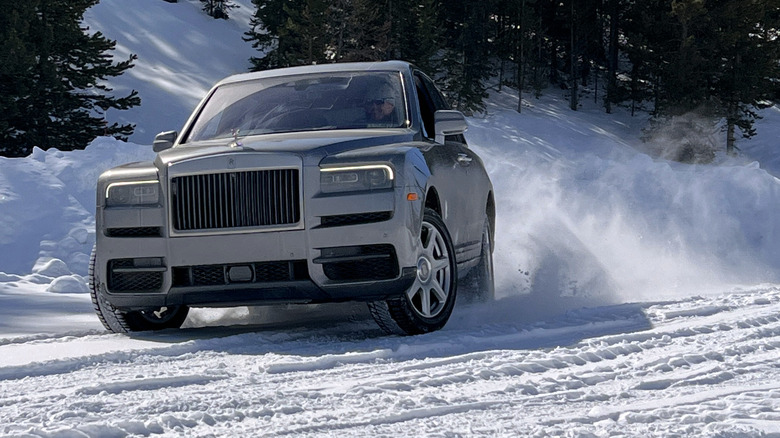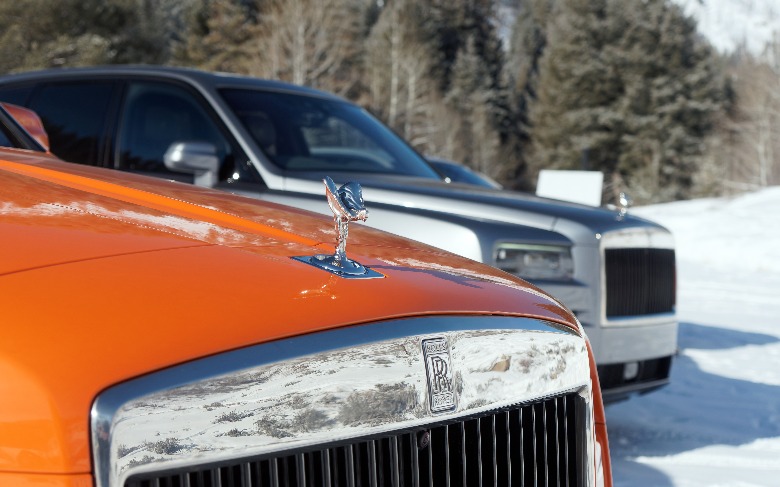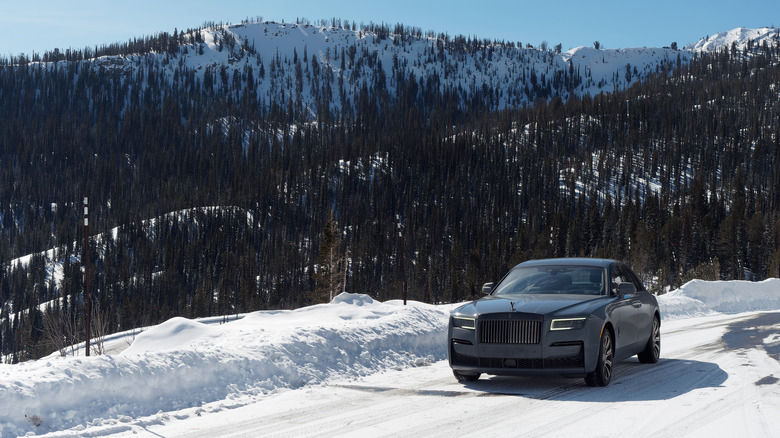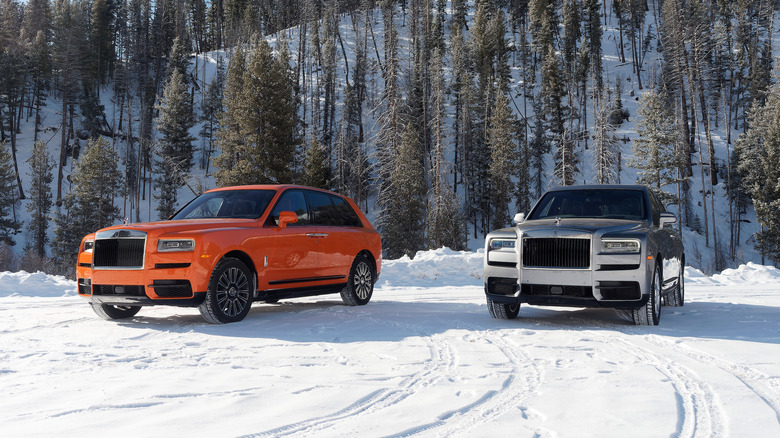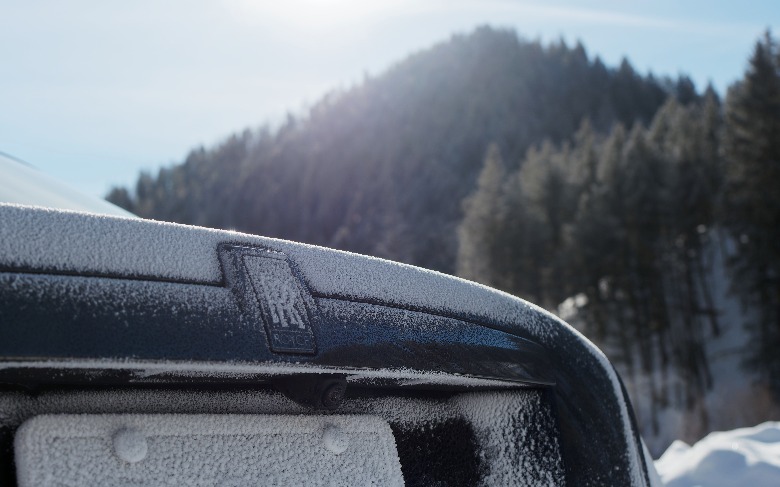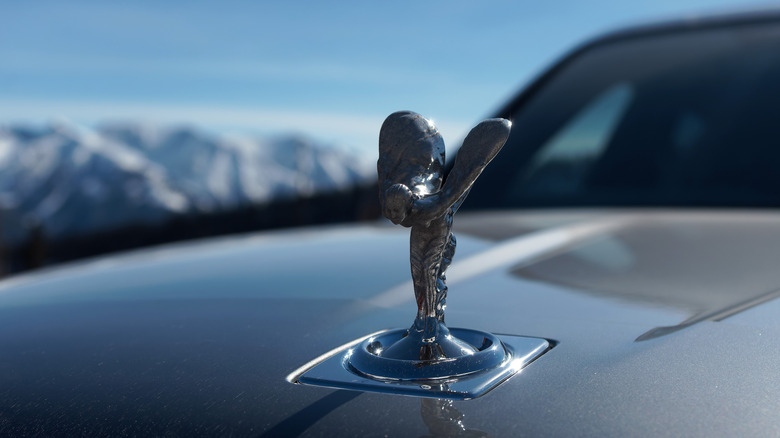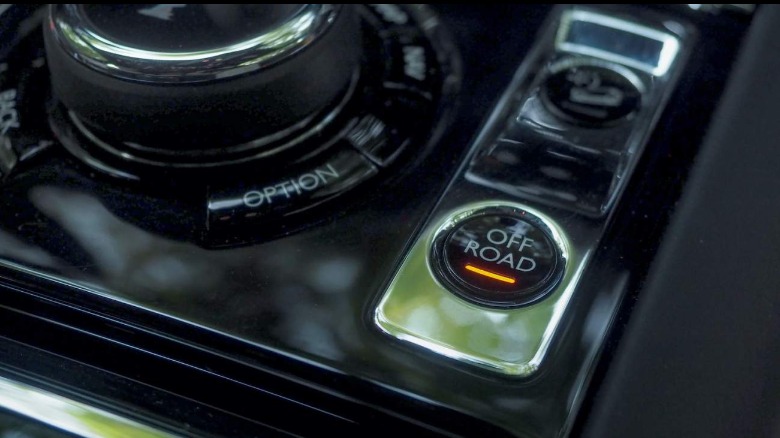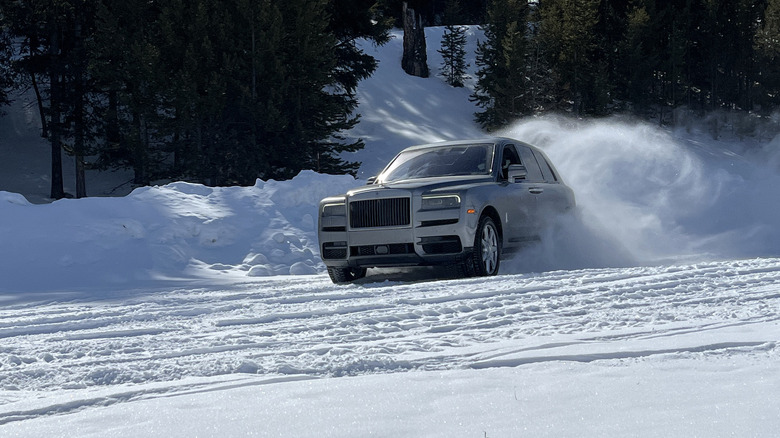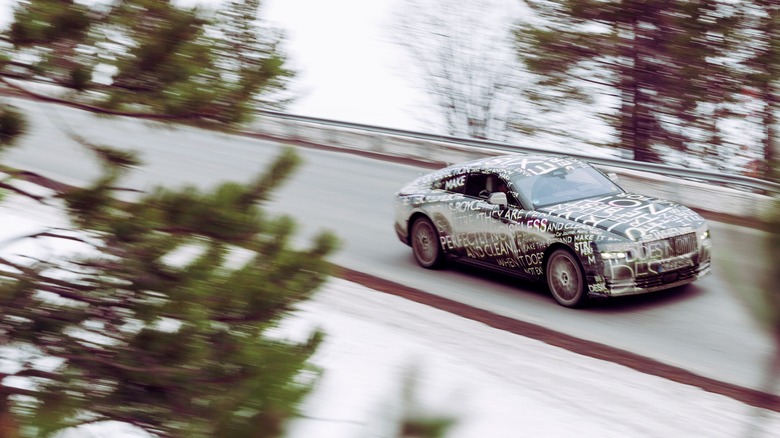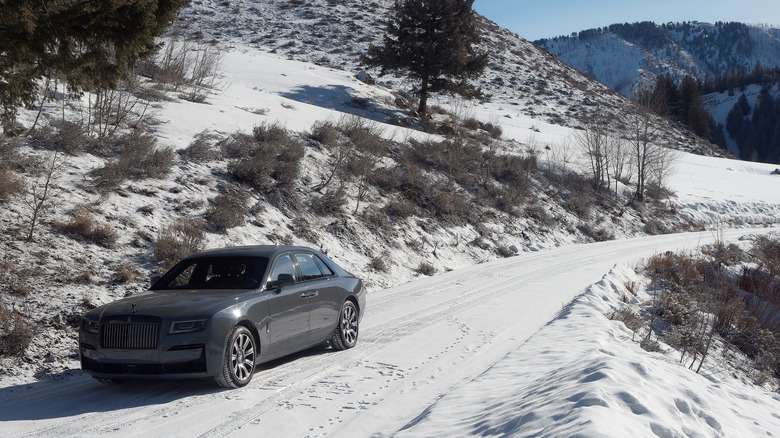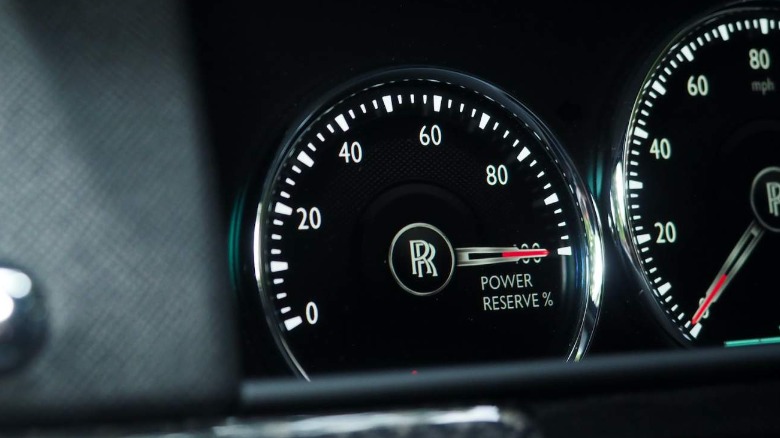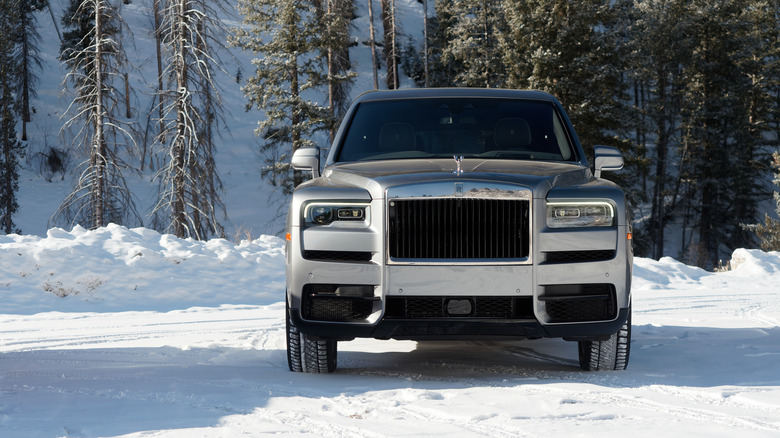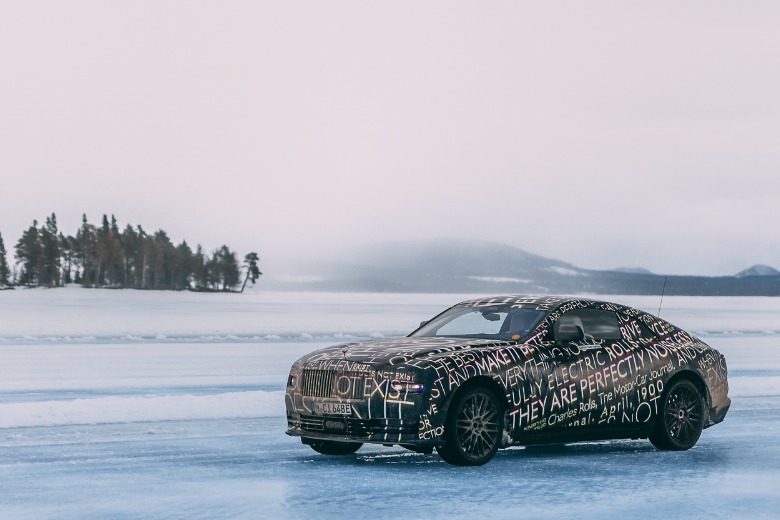An Ice Encounter With The Button That Captures Rolls-Royce's Future
It seems a lot to ask of one small, quite frankly surreptitious button, to epitomize the mindset of the modern luxury car, but Rolls-Royce is used to outsized demands. Certainly from the well-heeled clientele which has kept the automaker building increasingly cosseting sedans, coupes, convertibles, and most recently SUVs over more than a hundred years; a group of people unused to hearing the word "no" aimed in their direction.
Telling the exceedingly rich that they can't do something, or can't have something, seldom goes down well. Rising to that challenge with the ingenuity of a small — but focused and talented — team of engineers, wood and leather-workers, designers, artisans, and more, today's Rolls-Royce may be owned by BMW but it operates more akin to a modern-day fiefdom.
The result is a fraction of the production numbers of its parent company, certainly, but each with exponentially greater complexity. There is no shortage of automakers promising luxury, but the definition of that undoubtedly varies according to whose keys you're considering. For Rolls-Royce, despite the unapologetic scale, the privilege is in not having to dwell on minutiae.
Old brand, new drivetrain
Rolls-Royce is unexpectedly new to all-wheel drive. In fact, it wasn't until the Cullinan — its controversial SUV — launched back in 2018 that the technology arrived. Since then, we've seen the underlying Architecture of Luxury embrace AWD in the new Ghost, and with it another layer in the Rolls-Royce story.
Previously, the automaker points out, Rolls-Royce owners in winter climates were forced to set their cars aside until the spring. Coddle them in garages, perhaps, or even ship them to warmer climes like Florida. Transporters full of Phantoms and Wraiths, ferried south like migrating birds.
No Rolls-Royce owner struggles with only a single car in their garage: This is not a problem of scarcity by any means. The motivation here comes down to the flexibility not to have to choose. Luxury, as seen through the lens of not having to compromise.
Surreptitious... for a stately home on wheels
Depending on who you ask, Cullinan's launch was either a blasphemy, an inevitability, or a masterstroke. The high-end SUV segment has flourished, and Rolls-Royce's bold, upright, and angular entrant to the category was nothing if not true to form. From the vast grille, to the power-closing doors, and the unexpected degree of space inside the lavishly-leathered cabin, the automaker's most practical car is arguably its most imposing.
The new Ghost, in contrast, is practically surreptitious. Well, as much as you can be with a $394k starting price and backward-swinging rear coach doors. Smaller and less intimidating than a Phantom, it's the Rolls-Royce sedan for those who choose to drive themselves, while in Black Badge form it's positively mischievous.
When it debuted the darker, moodier option six years ago, the company expected a relative handful of owners to take the plunge; instead, the styling and performance package has well outpaced those conservative estimates. 40% of Cullinan sales, indeed, are of the Black Badge model. The Ghost Black Badge is even newer, but sales seem unlikely to skew differently.
A single button to unlock off-road talent
What's not a choice on either car is the powertrain. Both use a 6.75-liter V12 engine, with an eight-speed transmission and permanent all-wheel drive. Dare to push the accelerator all the way into the thick pile carpet and the Ghost will surge forward from zero to 60 mph in 4.5 seconds.
It's not so much the presence of all-wheel drive that stands out in the Cullinan and Ghost, but the nuances of its application. Or, to be more accurate, how little involvement is required of the driver in order to capitalize on the increase in grip.
Where a G-Wagon has its brace of milled-ingot differential switches spanning the dashboard, the Rolls-Royce has a single button in the center console marked "Off Road." It's the equivalent of the bell-pull in a stately home: tap it, and in the background the Cullinan or Ghost's technologies muster themselves, presenting little more than magic to the owner. Yes, if you really must, you can dig into the menus and tweak a little more yourself, but it's hard not to be swayed by the promise of absolute simplicity.
Sideways is best-ways
There is something unquestionably strange about going sideways in a six-figure Rolls-Royce SUV. For that, of course, you'll need to claw back the stiff upper lip of the Cullinan's traction control and other safety electronics, and allow it to show its 592 horsepower teeth.
I suspect few owners will go that route, even if the only thing holding them back is the thought of inadvertently scuffing a hand-painted coachline or getting ice scratches on a 22-inch alloy wheel. With its safeguards deployed, both the Ghost and Cullinan feel utterly planted and secure. There's nothing so mundane as having to think about your off-road settings: just press the button, and allow the car to handle the rest.
Presaging an electric future
Simplicity, of another sort, crows near in Rolls-Royce's future. Its first all-electric production car, the shapely — and, we've since discovered, sizable — Spectre coupe, is gradually taking form. Camouflaged still and, fittingly, ice-tested for the moment, but on track for customer deliveries in the latter months of 2023.
Electric cars find themselves in a curious middle-ground of straightforward complexity right now. On the one hand, the EV drivetrain is less finicky and more resilient than the V12 gas engines that Rolls-Royce currently favors. No pistons and flames to time and temper, just the clean, crisp thrum of electrons and magnets.
For all that Spectre's underpinnings may be effable, though, the broader ecosystem for EVs is still uncertain. Drivers may be convinced by instantaneous torque and hushed power, but fears about range and charging infrastructure remain prominent. There is a not-insignificant – and not unfair – question about whether an electric Rolls-Royce can truly feel like a Rolls-Royce.
Worries about where to charge and what cachet you'll command are not the simplicity that the Spirit of Ecstasy promises. The automaker's storied hood mascot may have slimmed down in the name of Spectre's aerodynamics, but what it represents can be no less tangible.
Intermingled DNA
Even as ice scuttles beneath the Ghost's wide winter rubber, and a rime of frost forms just outside the broad reach of the wipers, it's hard not to see hints to Spectre in the elegant sedan. Both are based on the same underlying platform, the custom architecture that Rolls-Royce developed first for Phantom, but with SUVs, coupes, convertibles, and electrification in mind. Platform sharing is usually about costs and efficiencies, but here it's easier to think of it as intermingled DNA: the reason why you suddenly find yourself thinking that yes, three or four hundred thousand dollars is a lot for a car, but it still feels justifiable.
A Ghost may have twelve cylinders all torquing in tandem beneath its lengthy hood, but Rolls-Royce's engineers do their utmost to keep all but its power at arm's length. Isolation from vibration and noise is a given; even the mechanics are translated into more tangible metrics, like the Power Reserve gauge in place of a tachometer.
Unquestionably, electrification will only amplify this privileged isolation. EVs are quieter and smoother; they can accelerate faster, and finesse their application of potency with swifter precision. Not for nothing have all the luxury automakers embraced the technology, hungry for the benefits of retiring noisy, shaky internal combustion.
The definition of True Luxury
Luxury is having choice, and true luxury is not having to choose. It's hard to imagine a Ghost or Cullinan as your daily-driver, even if Rolls-Royce has done its best to make cars which demand as little compromise as possible. The same will go for Spectre: while it may be Rolls-Royce's first EV, it's unlikely to be Spectre owners' only EV.
I have little doubt, even with the electric coupe still more than a year out, that it will be a compelling, engaging car. Interesting, unusual, and of course head-turning. What I'm far more curious about is whether Rolls-Royce can crack the simplicity question in the same way that it has with its deceptively straightforward "Off Road" button. After all, it had a working Phantom EV prototype ready all the way back in 2011, but decided the time was not right for a production version. Plenty has changed since then, but some of the core electric challenges remain.
At times, the high-end car segment can feel like an arms race. Who can promise the most power, the fastest acceleration, the most gadget-laden dashboard, and the most twinkling lights in your night-sky headliner. The pace is relentless; you could give yourself whiplash, trying to keep track of each update. Rolls-Royce isn't quite immune to that indulgence, but there's irony in the fact that the brand with the most ostentatious hood ornament also preaches the most restraint when it comes to giving drivers too much to think about. What'll be truly fascinating is seeing how well that ethos holds, as Cullinan and Ghost's all-electric cousin joins the line-up.
